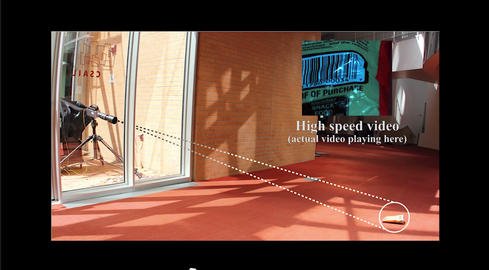Microsoft's Cure For Boring Video: SpeedMicrosoft's Cure For Boring Video: Speed
Videographers can create more compelling first-person videos by speeding them up with "Hyper-lapse" technology, Microsoft researchers say.


Eavesdropping On A New Level
Eavesdropping On A New Level (Click image for larger view and slideshow.)
In Shakespeare's "Hamlet," Polonius observes that brevity is the soul of wit, a claim underscored when the longwinded character is played as a fool.
For scientists at Microsoft, brevity is the soul of video. In a new paper, Microsoft researchers describe a way to accelerate scenes captured by first-person cameras into smooth time-lapse videos.
The mobile revolution has led to an explosion of video, not only from mobile phones but from small videocameras mounted on people and vehicles, such as GoPro cameras, Google Glass, or the newly introduced Polaroid Cube. Such cameras are referred to as "first-person cameras" because they suggest a first-person narrative in which the filmmaker participates in the story rather than presenting it as an external observer.
Microsoft researcher Johannes Kopf describes the problem with first-person video captured by mobile devices. Using videos he shot while riding his bike and climbing in the Cascades as examples, Kopf explained, "You know, there's nothing wrong with these, except they're hours long and just dead-boring to watch."
[Is Microsoft finally ready to compete in the smartphone race? Read Windows Phone 8.1 Update: 7 Key Facts.]
It's a problem Hollywood knows only too well: directors who produce bloated films. But professional filmmakers at least have editors and studios pushing to keep the story moving. Amateurs have only their own modesty and restraint to spare the world from epic videos of their commute, and modesty has all but vanished amid exhortations by social-media giants to share everything.
Now, thanks to Microsoft, the work of casual videographers could become more appealing, or at least watchable by virtue of faster playback. In theory, this could be accomplished through judicious editing. But it's far easier and far less time-consuming not to edit one's videos.
For Internet companies that have pushed to elevate user-generated content to the level where it can be monetized, Microsoft's research could make otherwise tedious raw video into something that passes for entertainment.
Microsoft's technology unfortunately can't create a narrative where none existed. But it can accelerate video to the point where the banal becomes engaging. Unjust though it may be to writers who labor for years to create compelling, well-paced narratives, all that's needed to capture human attention is speed. And that's what Microsoft's researchers have discovered: a way to make videos faster by an order of magnitude without amplifying nausea-inducing camera movement.
In the research paper, Kopf and fellow Microsoft researchers Michael Cohen and Richard Szeliski describe what they call first-person "Hyper-lapse" videos. It's a way of producing time-lapse video -- pictures taken periodically over time and animated -- with smooth camera movement.
Traditionally, smooth camera movement required mechanical assistance, in the form of a dolly, crane, or Steadicam. In recent years, video stabilization technology has made it possible to reduce the shakiness of handheld video. But video stabilization doesn't work very well when there's also time-compression involved.
The technique that Microsoft's researchers describe can create videos that can be played back 10 times faster than real-time and feel like they were filmed with a stabilized camera. The "Hyper-lapse" algorithm eventually will appear in a Windows app; it's just a matter of time.
Brevity may be the soul of wit, but for Microsoft and other companies with an interest in online video, it could become a source of revenue.
GE and Airbnb take very different approaches to measuring cloud computing's value. Their strategies, plus our exclusive survey, show that calculating cloud ROI is far from an exact science. Get the new Cloud ROI issue of information.
About the Author
You May Also Like






